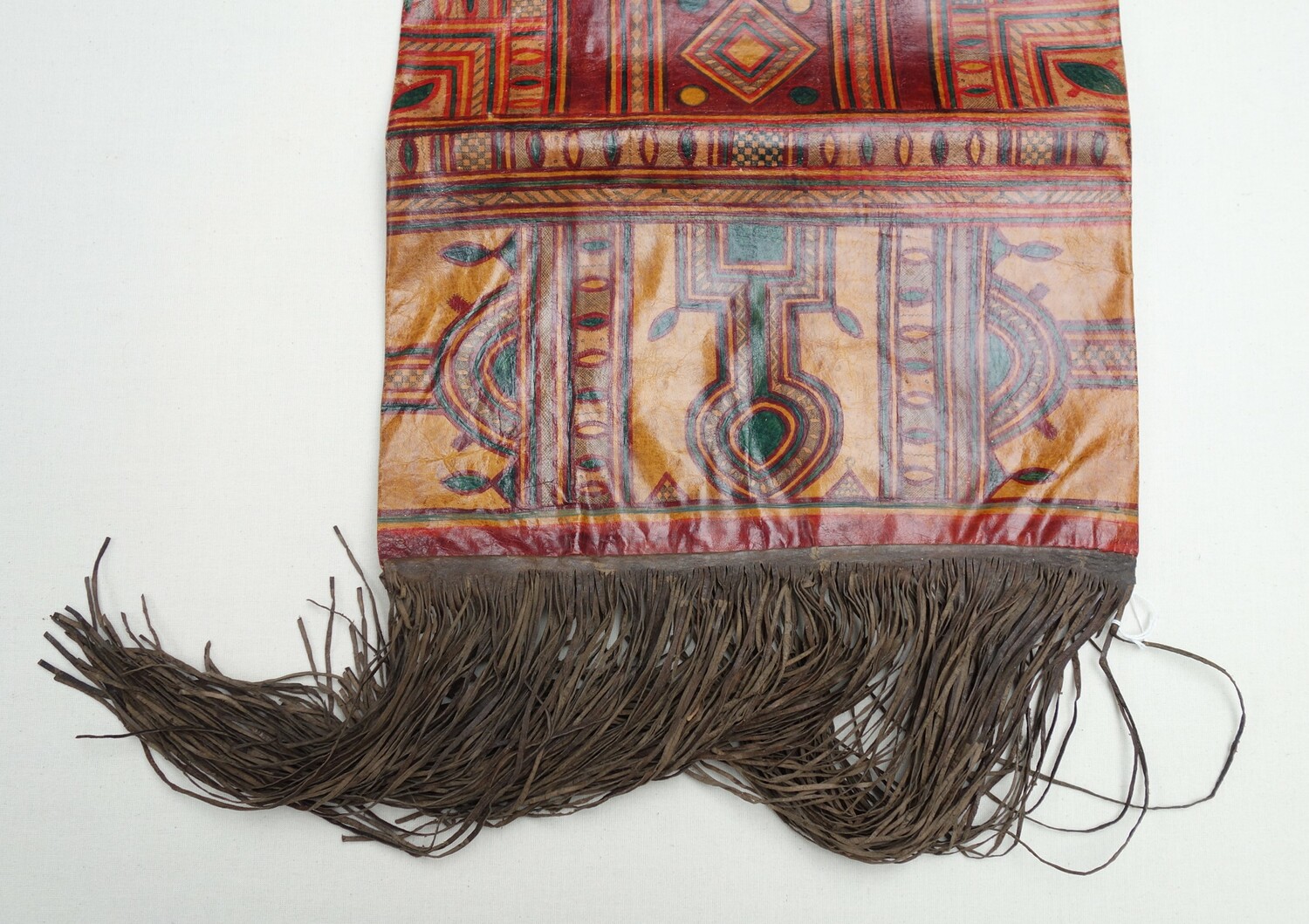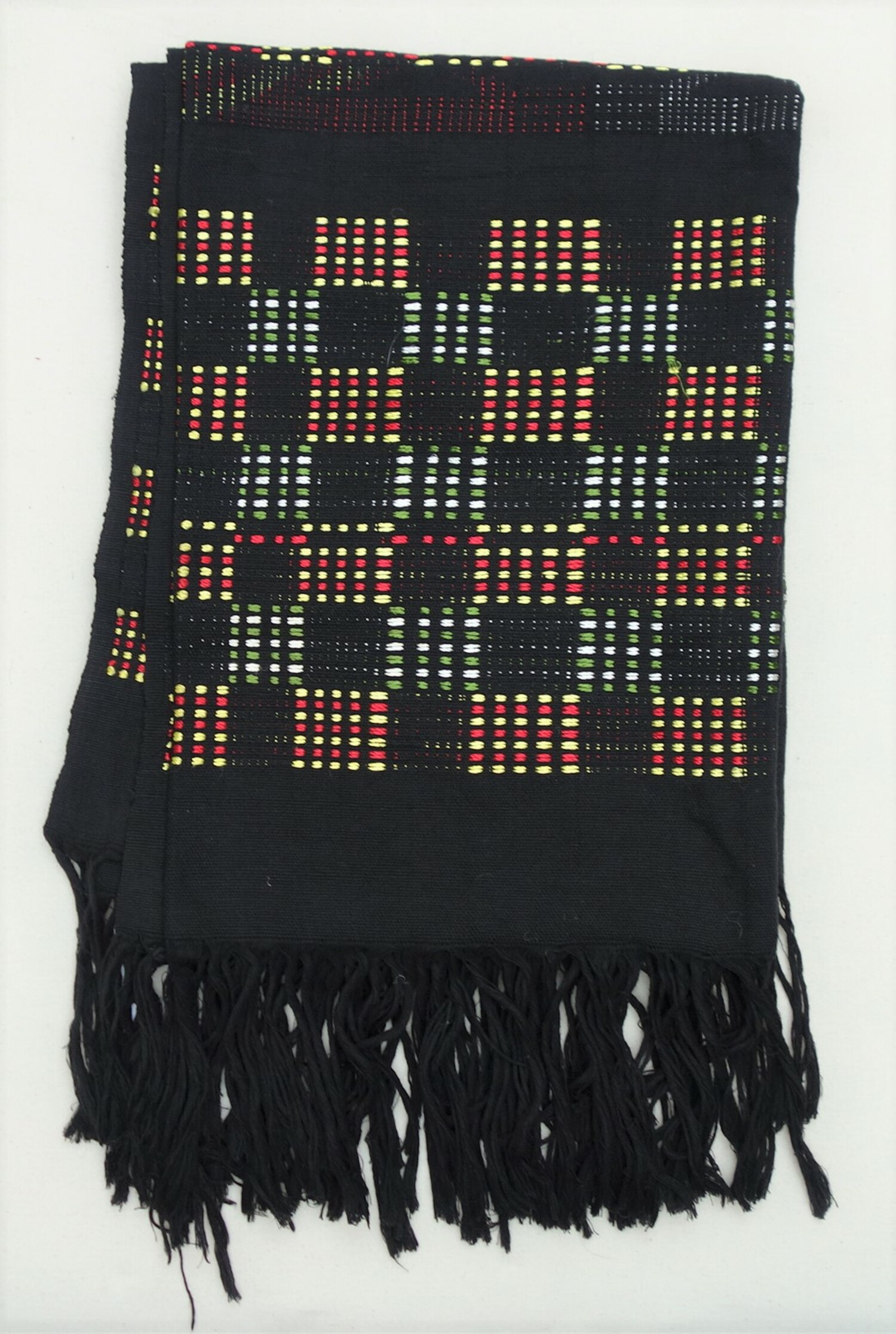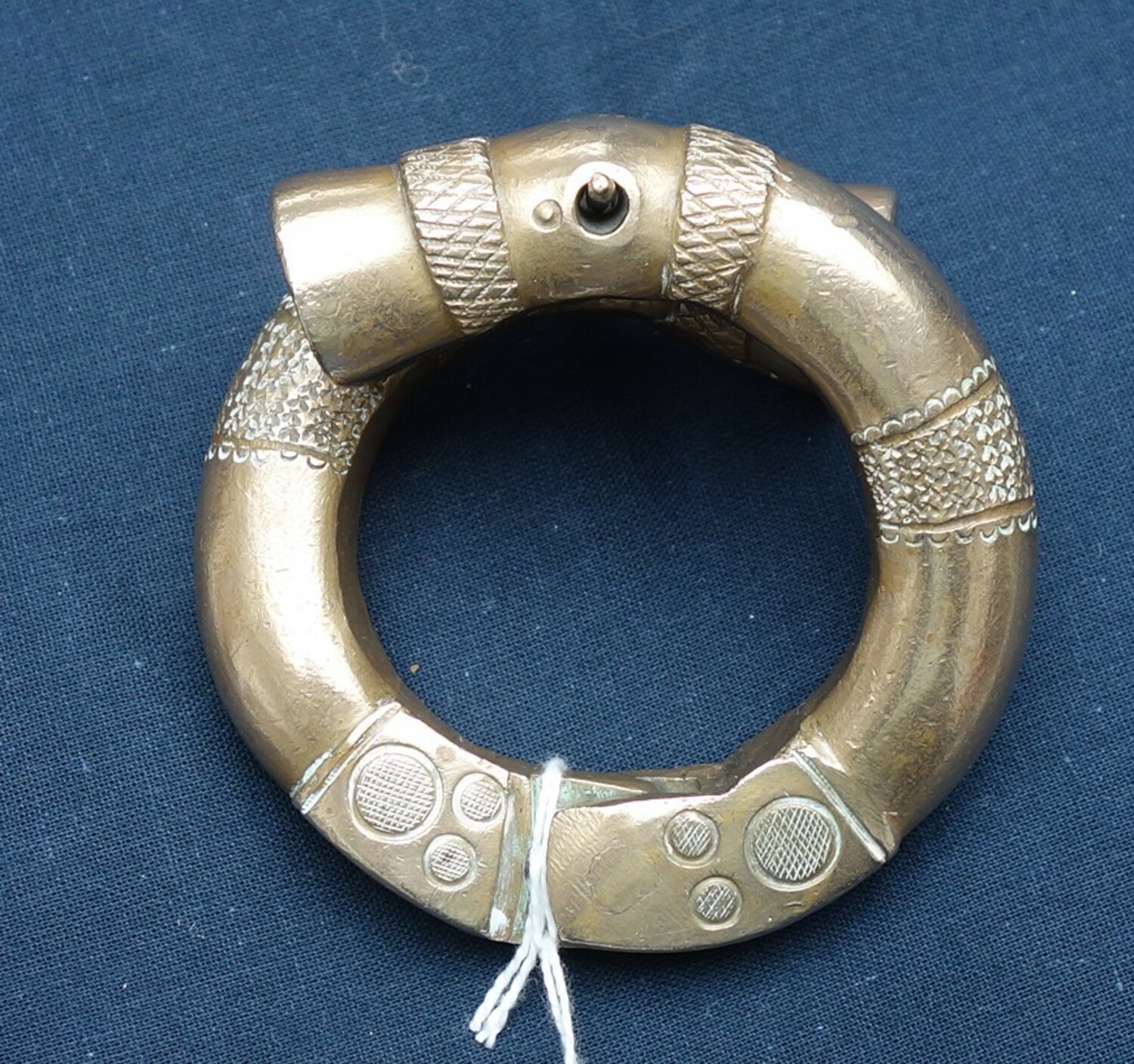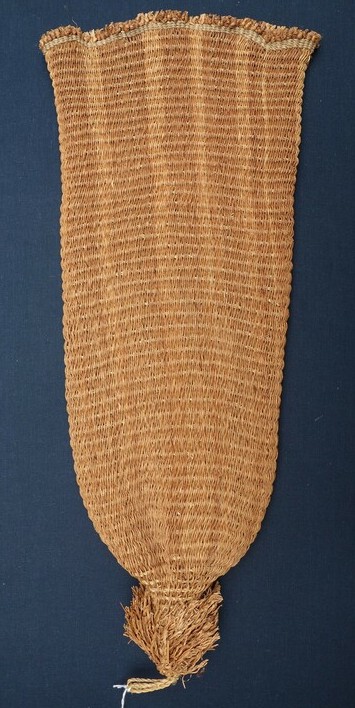
Many of these objects were donated by the family of Willem and Grace Bakker, who travelled widely in Africa, the Middle East (especially Egypt), Central Asia (including Afghanistan) and Asia (notably Indonesia).

There is also a Tuareg woman’s combined overdress and head veil (TRC 2021.2094) from Mali, made from a single width of open weave cotton cloth dyed with indigo. An intriguing piece is a leather Tuareg cushion cover, also from Mali, that was painted with geometric designs (TRC 2021.2115). Another leather item in the donation is associated with the Mossi people from Burkina Faso and consists of a straw hat partially covered with black and red painted leather (TRC 2021.2075).
From Nigeria are various long lengths of cloth with inlaid geometric patterns (TRC 2021.2116, TRC 2021.2117 and TRC 2021.2118) using supplementary wefts. Also from Nigeria there is a large, metal container or purse (TRC 2021.2082) with a leather fringe ending in bells. Another Nigerian item is a kaftan (TRC 2021.2108) that was designed and sold by Lebanese merchants in the main towns, especially to ex-pats and diplomatic families. In accounts of Nigerian textiles the emphasis is often laid on local, Indian or Chinese designed textiles and garments, but the connections with the Middle East are sometimes overlooked.

 Handmade basketry beer strainer from Swaziland, 1960s (TRC 2021.2084).From Swaziland in southern Africa there is a beer strainer (ivovo, TRC 2021.2084) made in a basketry technique, I have been trying to find out more information about this household object, but so far have not found many details. Also from southern Africa is a San people (Bushmen) container (TRC 2021.2129) made out of a small tortoise shell and decorated with shell (probably ostrich) disc beads.
Handmade basketry beer strainer from Swaziland, 1960s (TRC 2021.2084).From Swaziland in southern Africa there is a beer strainer (ivovo, TRC 2021.2084) made in a basketry technique, I have been trying to find out more information about this household object, but so far have not found many details. Also from southern Africa is a San people (Bushmen) container (TRC 2021.2129) made out of a small tortoise shell and decorated with shell (probably ostrich) disc beads.
All in all the Bakker collection can be used to highlight many aspects of the complex and extremely diverse history of African textiles and dress. It ranges quite literally from the Tuareg of the Sahel to the San people of southern Africa. It reflects local and international textile techniques, the trade of objects and people, as well as attitudes towards sustainability and making use of locally available items. A lot to take in and think about, with more to come.
Gillian Vogelsang, Director TRC, 15 July 2021










